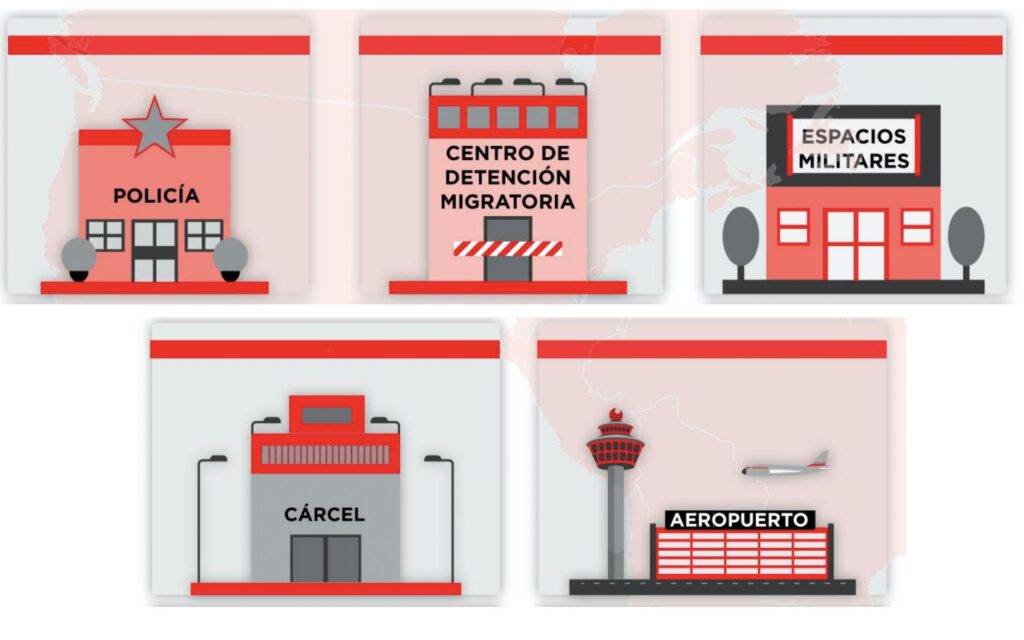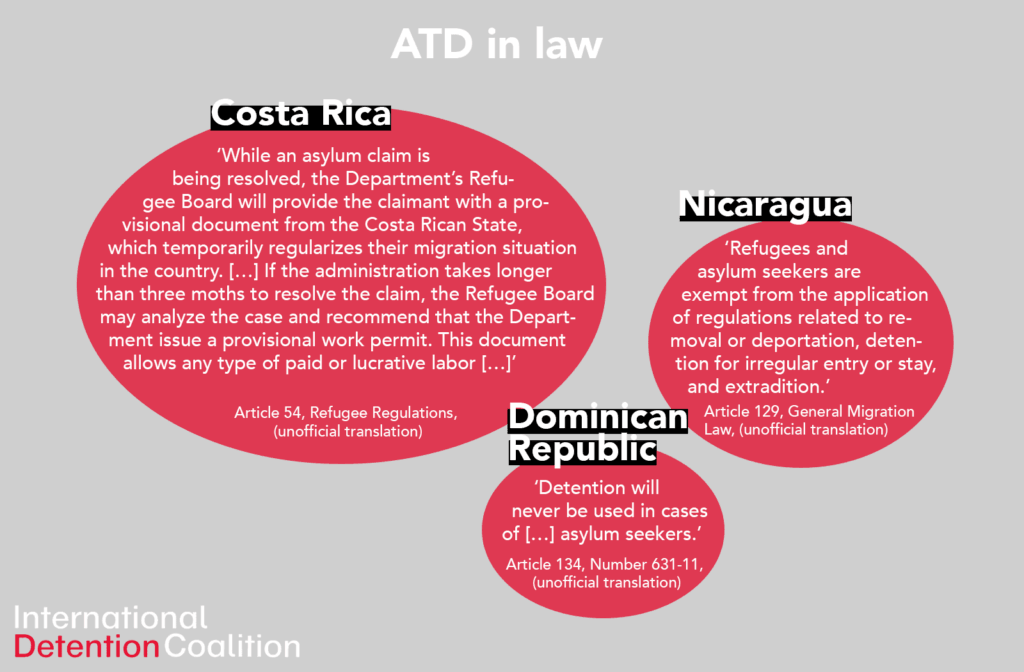Even though the phrase ‘alternatives to detention’ is present in numerous international human rights instruments, it is not an established legal term or a prescriptive concept. In fact, different stakeholders often use varying definitions of the term. As a working definition, the IDC understands alternatives to detention to mean: “any law, policy or practice by which persons are not detained for reasons related to their migration status.”
For IDC, alternatives to detention (or ‘ATD’) are a key element of the strategy to limit and end the use of immigration detention; and for this reason, we choose to use a broad definition. This expansive definition incorporates a range of options available to governments to manage migration without resorting to detention. By compiling different ATD examples found in law, policy and practice, we’re able to offer ideas and starting points for each country to continue to limit use of immigration detention and ensure detention is not being implemented illegally or unnecessarily.
ATD in law

For example, when we discuss ATD in law, we are able to point to examples in Costa Rica, the Dominican Republic and Nicaragua, among others.
Often, ATD in law limits the use of detention by prohibiting it for certain groups of people, especially those in vulnerable situations. IDC
recommends that laws include a mandate to explore ATD implementation before resorting to detention, as well as judicial review of all decisions to deprive someone of their liberty.

ATD Policy
An important distinction between implementing ATD in law and implementing ATD policy, is that sometimes the latter is more accessible to governments given it is not required to pass through a legislative process. For example, in Mexico, immigration and refugee authorities coordinate with the United Nations High Commissioner for Refugees (UNHCR) and civil society organizations to implement a release program from asylum seekers. People seeking asylum in Mexico can be released from immigration detention to live in the community in their own home or in a shelter. They are obligated to periodically report to authorities during their asylum process, while UNHCR and civil society organizations provide support to help them satisfy their basic needs.
ATD in practice
ATD in practice often depend on participation by civil society organizations for their operation, and in some circumstances, without any government support. For example, in the US, the Interfaith Committee for Detained Immigrants operates a group home for men where they can live and continue to participate in their migration or asylum process. The home functions as an ATD in practice for people who have been released from detention, although the program does not receive support from the US government.
In countries where immigration detention is the exception rather than the rule, ATD in practice are highly diverse and are often integrated into social services and national protection or public support systems that are available to all people living in the community, both immigrants and nationals.
ATD exist and are effective
IDC’s body of research shows that the most effective ATD in terms of reaching legitimate government aims and guaranteeing human rights are those that involve both government and civil society in their development, implementation and evaluation.
While none of these ATD examples are perfect, they demonstrate the variety of options available to governments to carry-out migration management without the use of detention.

Unfortunately, we continue to observe that the primary focus of ATD implementation is still enforcement and control mechanisms, such as restrictions on freedom of movement, bail or bond, and reporting requirements. These mechanisms seek to promote compliance with immigration procedures but have generated little evidence of effectiveness.
Instead, a growing body of research and evidence shows that the most effective ATD are those that engage migrants in immigration and asylum procedures, in particular through tailored case management. This involves a social work approach, and is a comprehensive strategy to provide specialized support with migrants, empowering them to participate in decision-making as they navigate complex legal and administrative migration processes.
Learn more:
Frequently Asked Questions about ATD
More ATD examples from the Americas and around the world
Elements of the most effective ATD and the Community Assessment and Placement Model: There Are Alternatives

